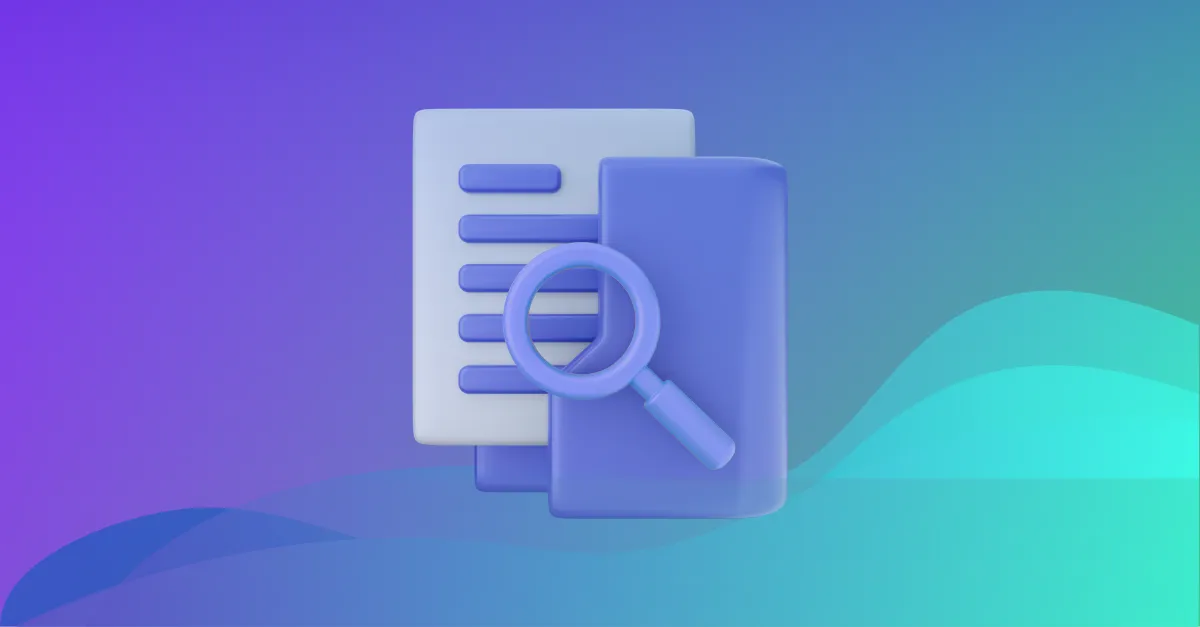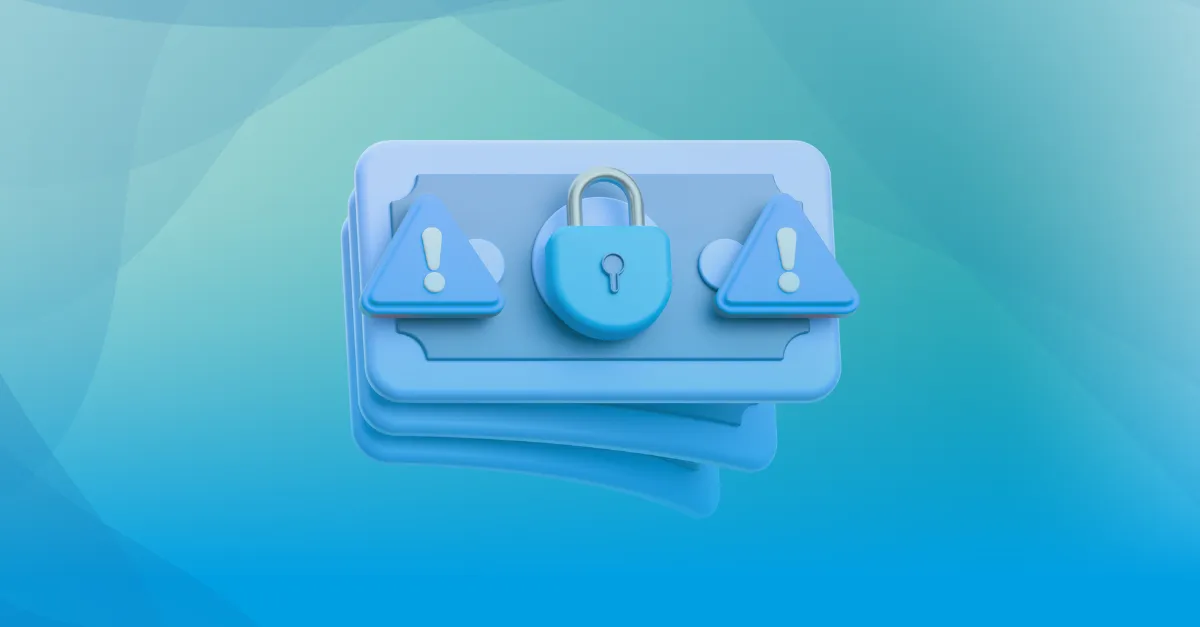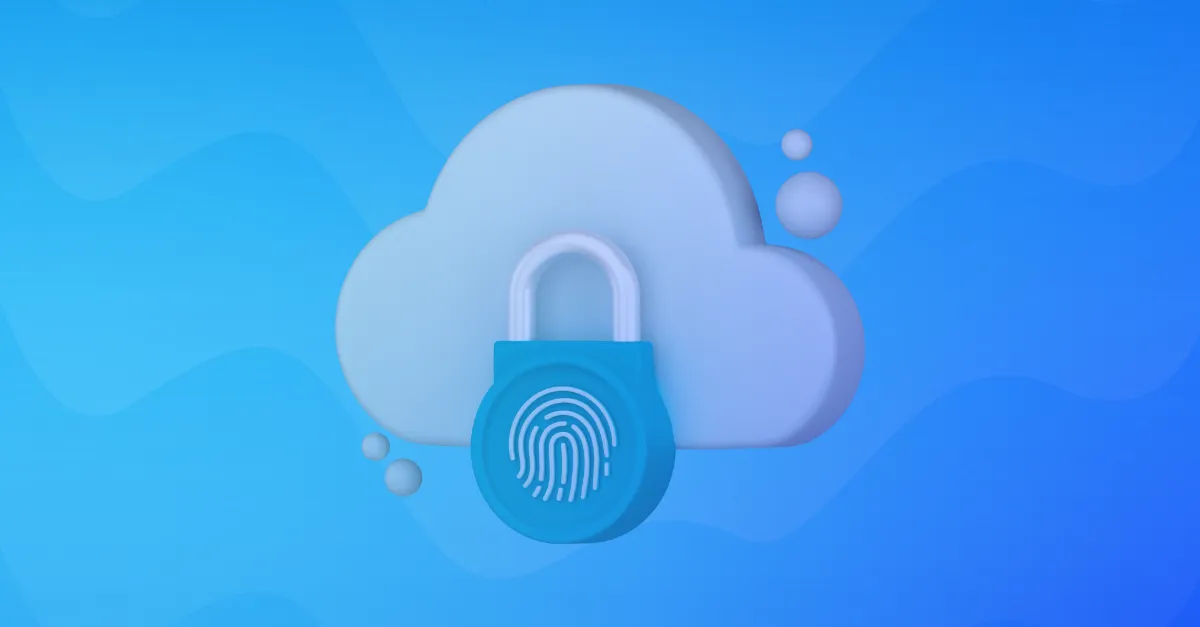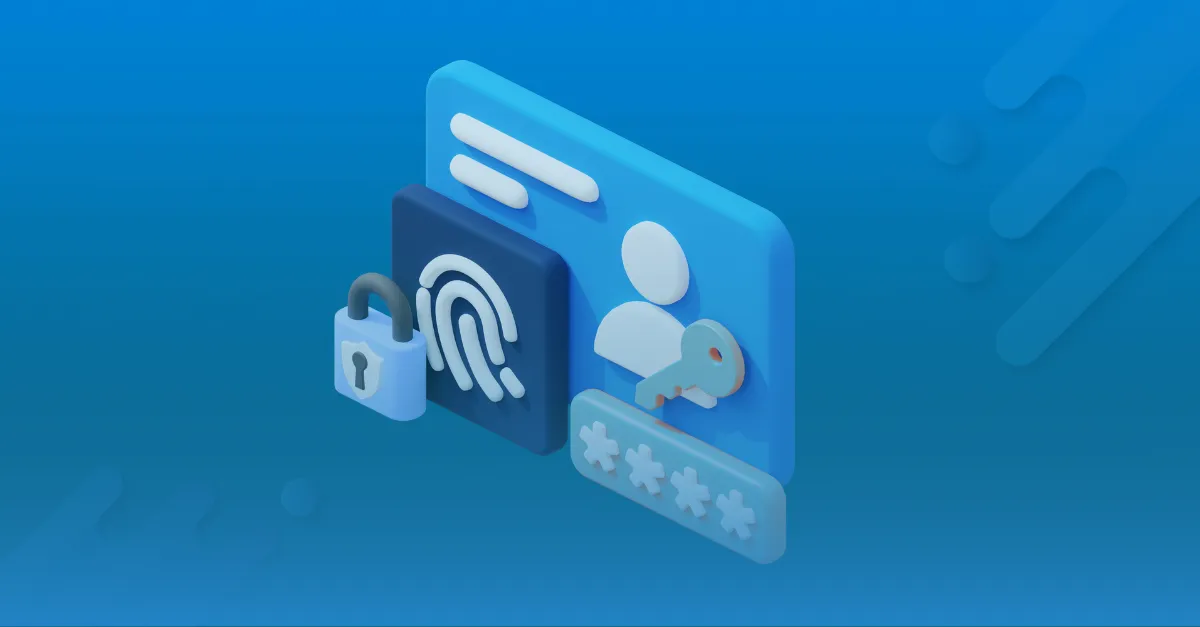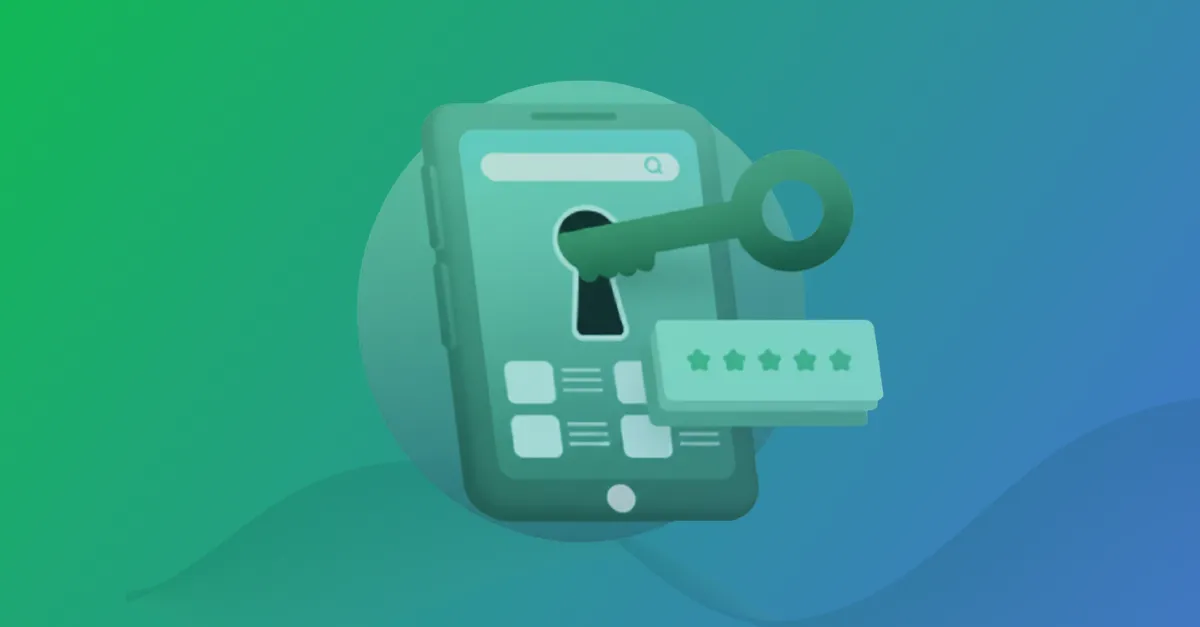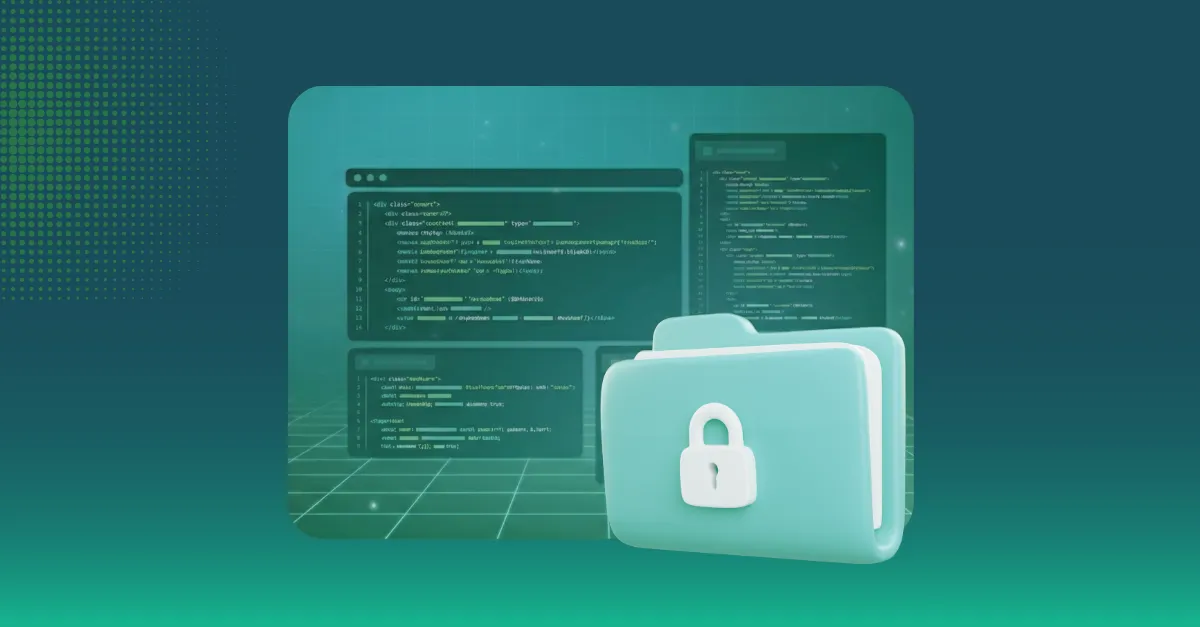![Best Rapid7 alternatives & competitors in the market [August 2025] Best Rapid7 alternatives & competitors in the market [August 2025]](https://beaglesecurity.com/blog/images/best-rapid7-alternatives-840.webp)
Rapid7 has a comprehensive security platform spanning application security testing (InsightAppSec), threat detection and response (InsightIDR), vulnerability management (InsightVM), and cloud security (InsightCloudSec).
Their Insight Platform promises unified visibility and analytics across your entire security infrastructure.
The challenge for engineering leadership: Rapid7’s broad approach might not align with your specific security priorities, budget constraints, or technical requirements.
Organizations often need specialized solutions that excel in particular areas rather than a platform that covers everything adequately.
Whether you require deeper application security testing capabilities, a more flexible SIEM, or cloud-native security controls, purpose-built alternatives can deliver better outcomes for your specific use case.
This comprehensive analysis examines the top Rapid7 alternatives and competitors across each core security category, providing detailed insights into specialized solutions that integrate effectively with modern development workflows, and offer the technical depth needed to address enterprise-scale security challenges without the complexity overhead of a monolithic platform.
Best Rapid7 alternatives at a glance
| Software | Pricing | Strengths | Best for |
|---|---|---|---|
| Beagle Security | Self-serve plans start at $1188/year Enterprise plans start at $8500/year | AI-driven automated web application & API penetration testing | Startup and mid-market teams needing routine pentesting to strengthen application security posture |
| ZAP | Free | Open-source, highly extensible, ideal for automated vulnerability scanning | Individuals/dev teams wanting free web application scanning |
| Escape | $50,000/year | API/GraphQL security testing | API‑first apps, GraphQL and CI/CD environments |
| CrowdStrike Falcon | $59.99/device annually | Endpoint protection, EDR, threat detection, integrated response | Endpoint-heavy environments with advanced threat protection |
| SentinelOne | $179 per endpoint | Autonomous EDR, AI detection, integrated incident response | Enterprises needing endpoint and autonomously managed security |
| SecOps Solution | Custom quote | Agent-less patch and vulnerability management | Quickly deploying vulnerability scanning and patching across hybrid environments without installing agents |
| Tenable | $5780/year for 100 assets | Broad vulnerability/exposure management,compliance support, asset‑based | Enterprises needing unified exposure and cloud/IT risk management |
| Wiz | $24000/year for 100 cloud workloads | Cloud-native posture management and vulnerability scanning, integration-rich | Teams focused on multi-cloud posture |
| Orca Security | $7000/month | Unified CNAPP, agentless coverage | Large cloud-first organisation seeking full-stack cloud security |
Best Rapid7 alternatives and competitors [August 2025]
This guide evaluates top Rapid7 alternatives across the key product categories: application security (DAST), SIEM, vulnerability management, and cloud-native protection. For each category, you’ll find competitor strengths, unique features, pricing context and real-user reviews.
Application security/DAST (Rapid7 InsightAppSec alternatives)
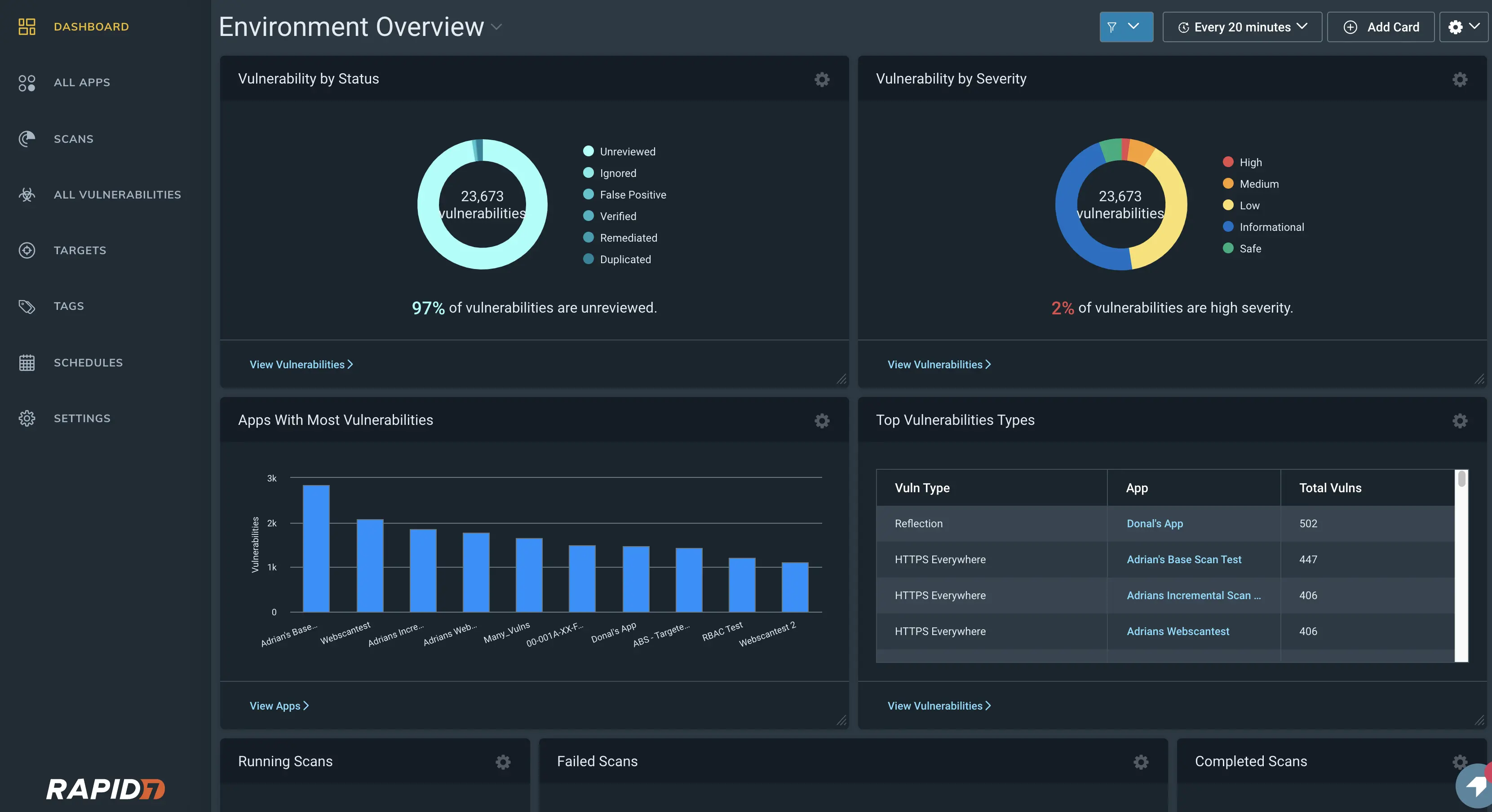
Dynamic Application Security Testing (DAST) tools scan running web applications and APIs for vulnerabilities without access to source code. Rapid7 InsightAppSec offers broad DAST coverage and extensive dashboard customization, supporting multiple file formats and custom attack templates. However, its drawbacks include limited API discovery, false positives, lack of workflow automation and developer-friendly remediation.
Let’s take a look at the Rapid7 InsightAppSec alternatives.
1. Beagle Security

Beagle Security addresses critical gaps in traditional DAST tools through context-aware testing, AI-based login flows, and business logic testing that mimics real attacker behavior, while most other tools concentrate on traditional vulnerability scanning.
The platform eliminates common DAST friction points and there is very little need for technical assistance or training with a quick and simple onboarding process.
Reports include stack-specific remediation guidance rather than generic fix recommendations, enabling developers to implement fixes without requiring deep security expertise.
The reports also come with mappings with OWASP Top 10, ISO, HIPAA & PCI DSS. Beagle Security fits seamlessly into CI/CD pipelines, enabling teams to shift security left and test continuously without blocking releases.
Beagle Security key features
AI-powered penetration testing engine
Web application, API & GraphQL penetration testing
Advanced login authentication
Contextual tech stack based fix recommendations
Compliance-ready reports - OWASP, HIPAA, PCI DSS
CI/CD integration for shift-left security
Business logic testing
Beagle Security pricing
Essential plan starts from $119/month
Enterprise plans starts from $8500/year
Pricing is based on features and usage, not arbitrary target limits. It provides monthly and annual plans that meet startup and mid-market needs with pricing models that are compatible for MSSPs too.
Above all, you can test it out for free with a 14 day free trial before making a decision.
Beagle Security ratings & reviews
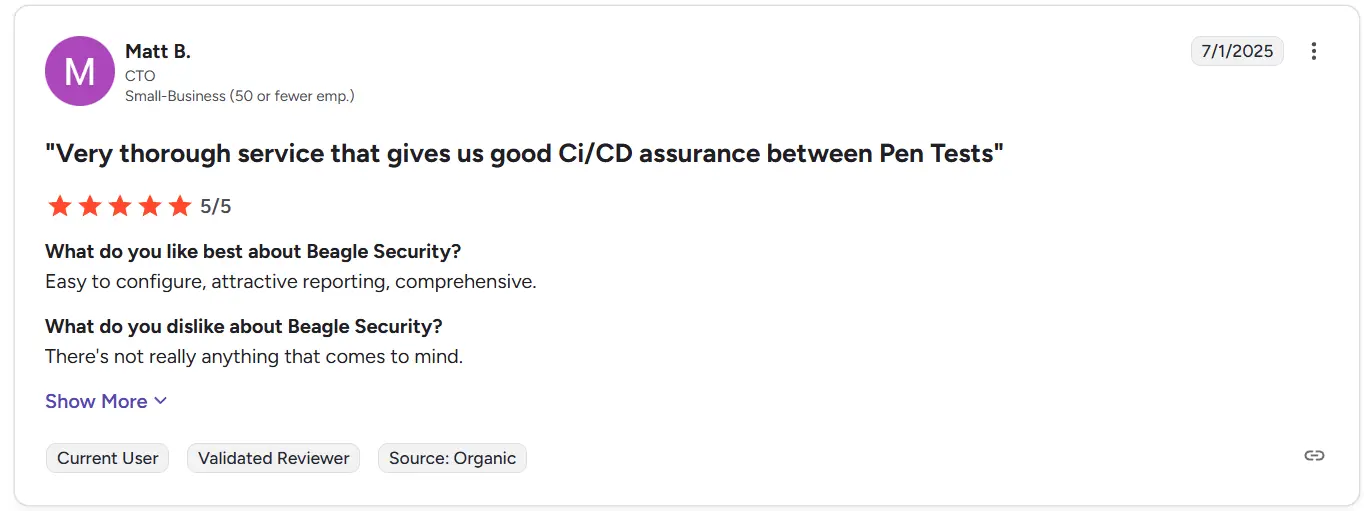
Source: G2
Beagle Security shines with its intuitive onboarding, highly rated support, and effective automation, earning consistent 4.7-star user ratings.
It is widely praised for its easy configuration, comprehensive testing capabilities, clean and insightful reporting. Customers value how it delivers continuous security assurance between traditional penetration tests, making it a reliable asset within modern CI/CD pipelines.
2. ZAP by Checkmarx

ZAP (Zed Attack Proxy) is a popular open-source DAST tool designed to help developers and security teams find vulnerabilities in web applications. Built and maintained by the open-source community under Checkmarx, it strikes a solid balance between automated scanning and hands-on testing.
Whether you’re scanning for common issues like XSS or SQL injection, or diving deeper with manual testing, ZAP has you covered. It’s approachable for beginners, yet powerful enough for advanced users.
That said, it’s not entirely plug-and-play. Getting started may take some time and effort, especially for those unfamiliar with security tools. But once you’re past the initial setup, ZAP becomes a valuable and reliable asset in your security toolkit.
ZAP key features
Active and passive scanning
Interception proxy
Spidering and crawling
Authentication handling
Reporting and integration
Extensibility
Scripting
ZAP pricing
ZAP is a completely free and open-source tool, making it an excellent choice for teams with limited budgets.
ZAP ratings & reviews
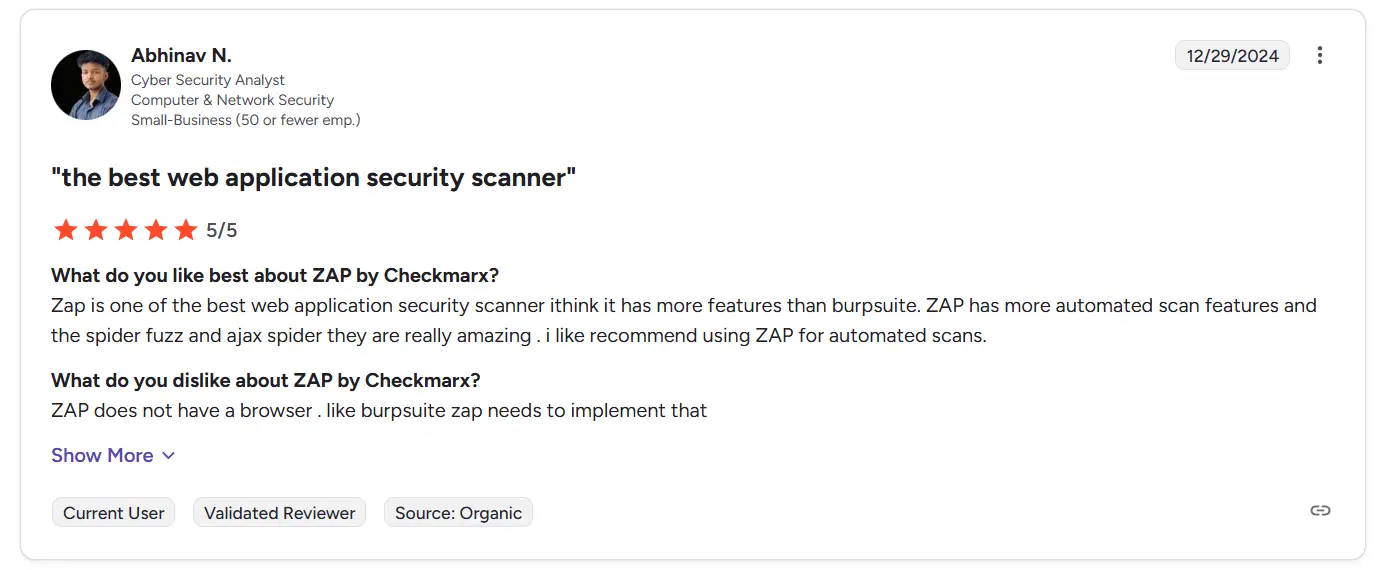
Source: G2
ZAP holds a strong 4.7 star rating on G2, reflecting high user satisfaction. One reviewer rated it 5/5, praising its advanced automated scanning and spidering features, even calling it more feature-rich than Burp Suite though they noted the absence of a built-in browser.
3. Escape
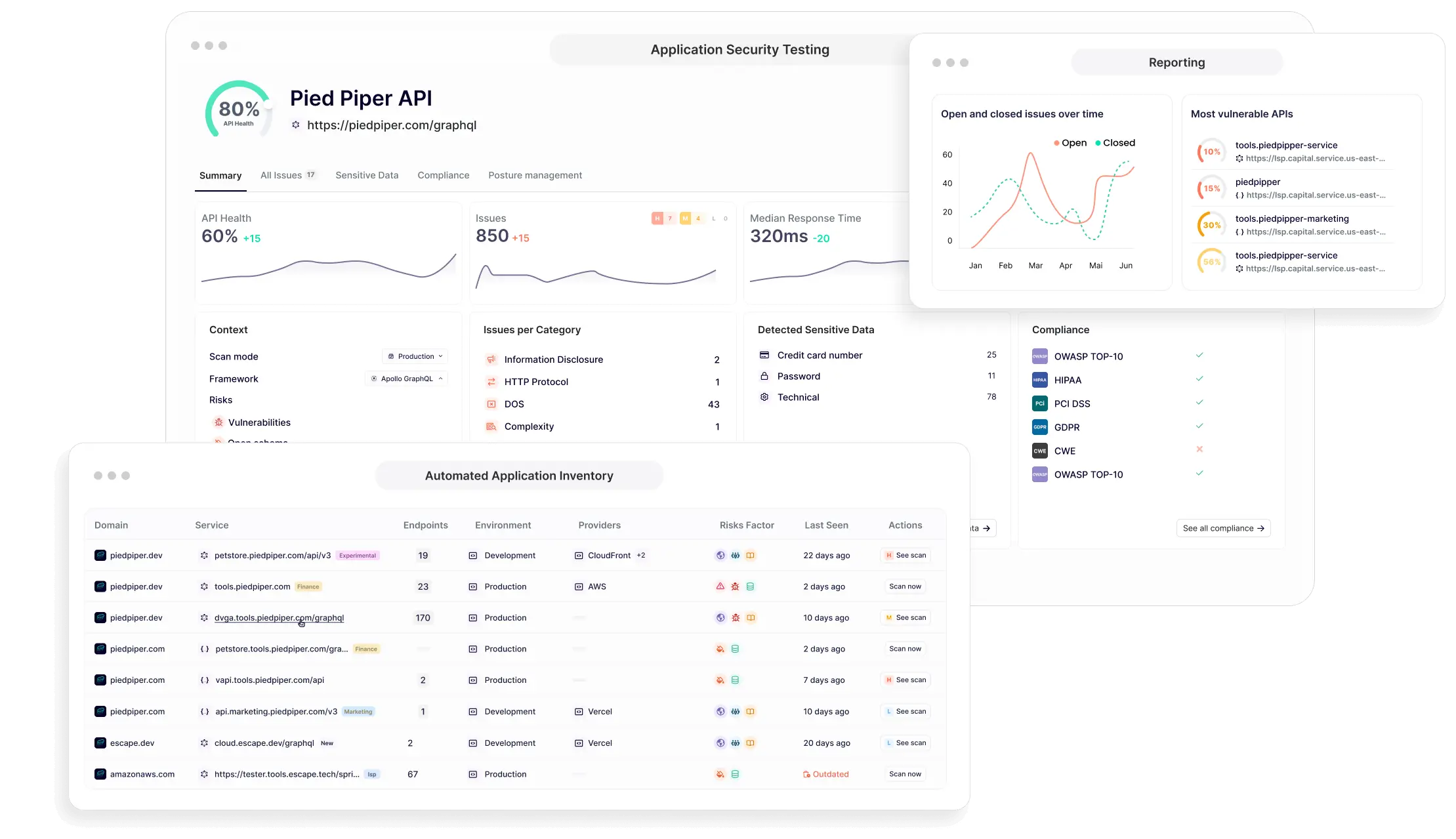
If your primary concern is API security, especially for modern stacks using GraphQL then Escape is a smart, focused alternative to Rapid7.
Rapid7 provides extensive vulnerability management capabilities, but for development teams who only wish to effectively secure their APIs while they are in development, it frequently feels more excessive.
If you’re not managing hundreds of assets or legacy systems, you might not need the full muscle of a platform like Rapid7. Escape gives you just what you need for API-first security. It’s a strong pick for engineering-driven teams that want security without slowing down velocity.
Escape key features
AI-powered DAST for business logic vulnerability detection
Native GraphQL security testing and coverage
Integrate security in CI/CD
Ensure Compliance to OWASP TOP 10, HIPAA, SOC2
Escape pricing
- Enterprise plan starts at $50,000/year and supports up to 15 scanned applications with unlimited scan frequency and dedicated technical support
It’s a premium solution tailored for teams that prioritize deep API coverage, particularly in GraphQL-heavy environments.
Escape ratings & reviews

Source: G2
Customers praise its accuracy, developer-friendly layout, and extensive API testing features. It is highly regarded for its ability to detect intricate problems in GraphQL and REST APIs, an area in which many conventional tools are inadequate.
SIEM (Rapid7 InsightIDR alternatives)
Security Information and Event Management (SIEM) tools are essential for aggregating and analyzing security data across systems to detect threats and streamline incident response.
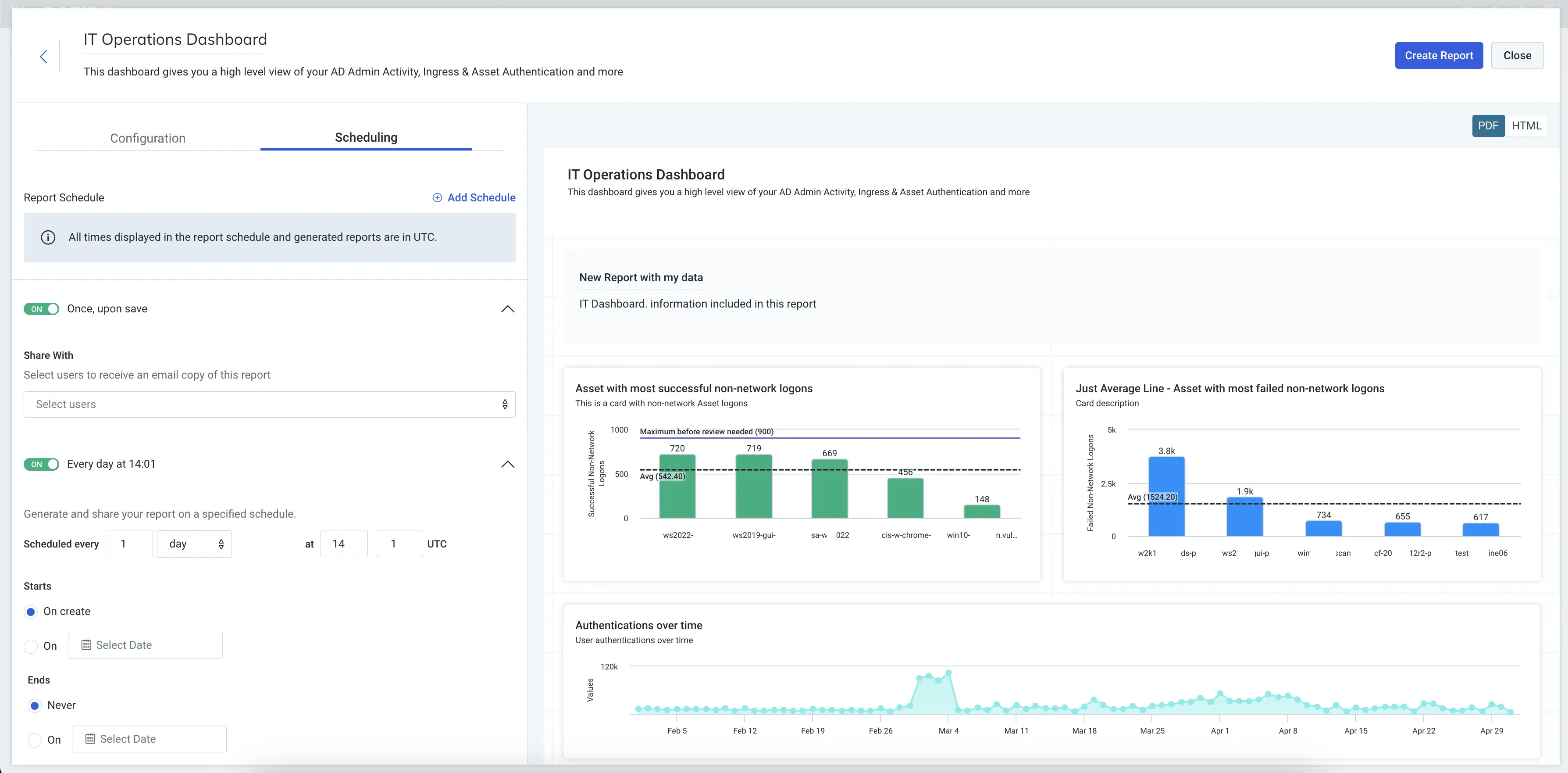
Rapid7 offers InsightIDR as a SIEM solution which is renowned for its strong incident detection capabilities and User Behavior Analytics (UBA).
Although it provides a unified platform experience and good visibility into user activities, some customers complain about issues like expensive data storage and difficult integrations with specific environments, which has led many organizations to look into more adaptable or affordable options.
Let’s take a look at the Rapid7 InsightIDR alternatives.
1. CrowdStrike Falcon
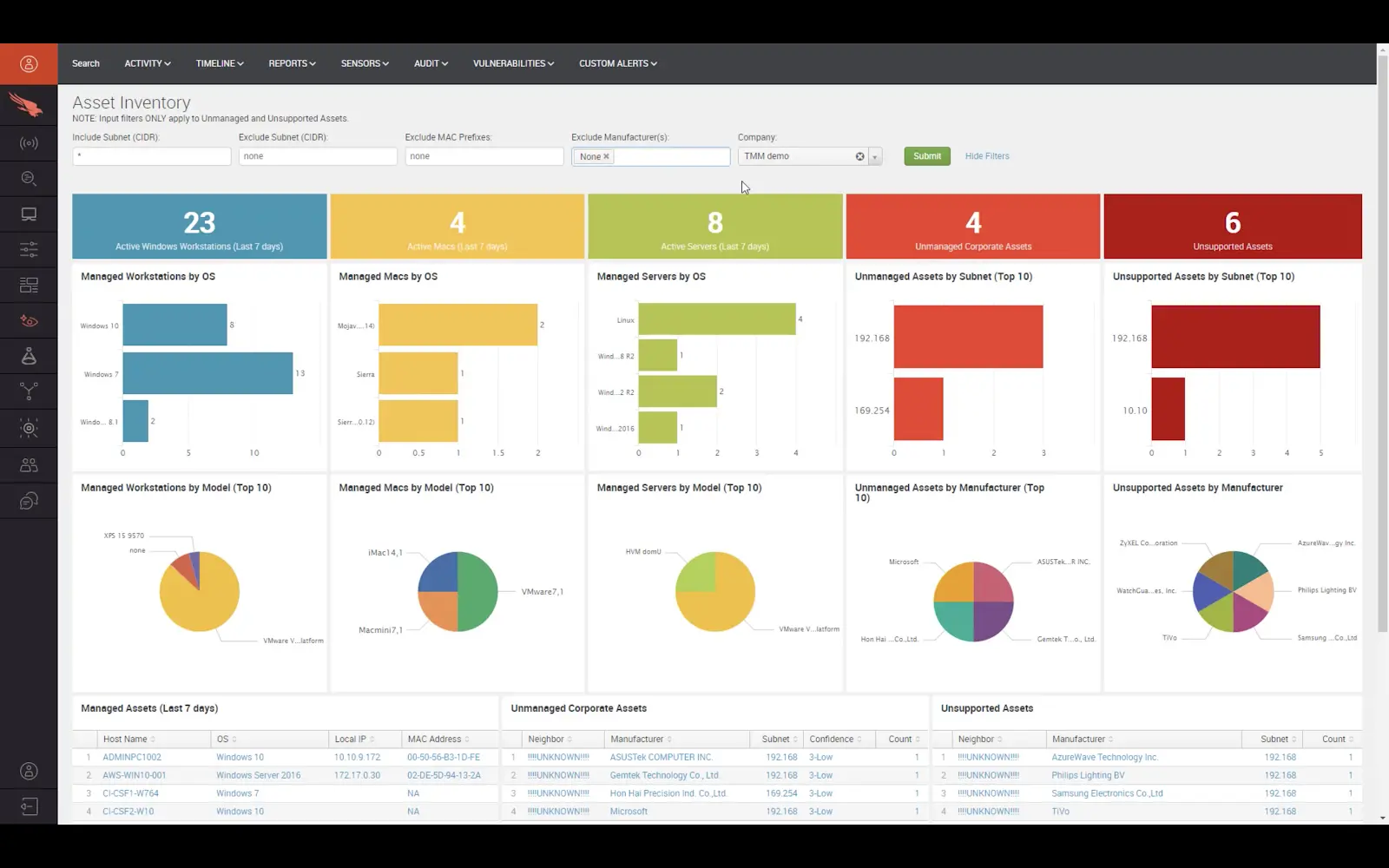
CrowdStrike Falcon is a leading cloud-native endpoint protection platform known for its speed, scalability and threat intelligence.
Threat hunting, EDR (Endpoint Detection and Response) and antivirus are all combined into one little agent that doesn’t affect device performance. Falcon, made for contemporary security teams, employs analytics driven by AI to instantly identify and stop known and unknown threats across endpoints.
Falcon is not a traditional SIEM, it often serves as a powerful alternative or complement that provides flexible deployment models and integrations with other tools, especially for teams focused on endpoint-level protection and rapid response.
CrowdStrike Falcon key features
Endpoint Detection and Response (EDR)
Extended Detection and Response (XDR)
Threat simulator
MITRE ATT&CK mapping
Device control
Anti-exploit technology
Vulnerability management
Infection remediation
CrowdStrike Falcon pricing
CrowdStrike Falcon offers tiered pricing based on the level of protection and features required:
Falcon Go – $59.99/device annually: Includes next-gen antivirus, device control, mobile device protection and express support.
Falcon Pro – $99.99/device annually: Adds firewall management to the Go plan features.
Falcon Enterprise – $184.99/device annually: Includes everything in Pro, plus Endpoint Detection and Response (EDR) and Threat Hunting capabilities.
These pricing tiers allow organizations to scale security based on their risk tolerance and operational needs.
CrowdStrike Falcon ratings & reviews
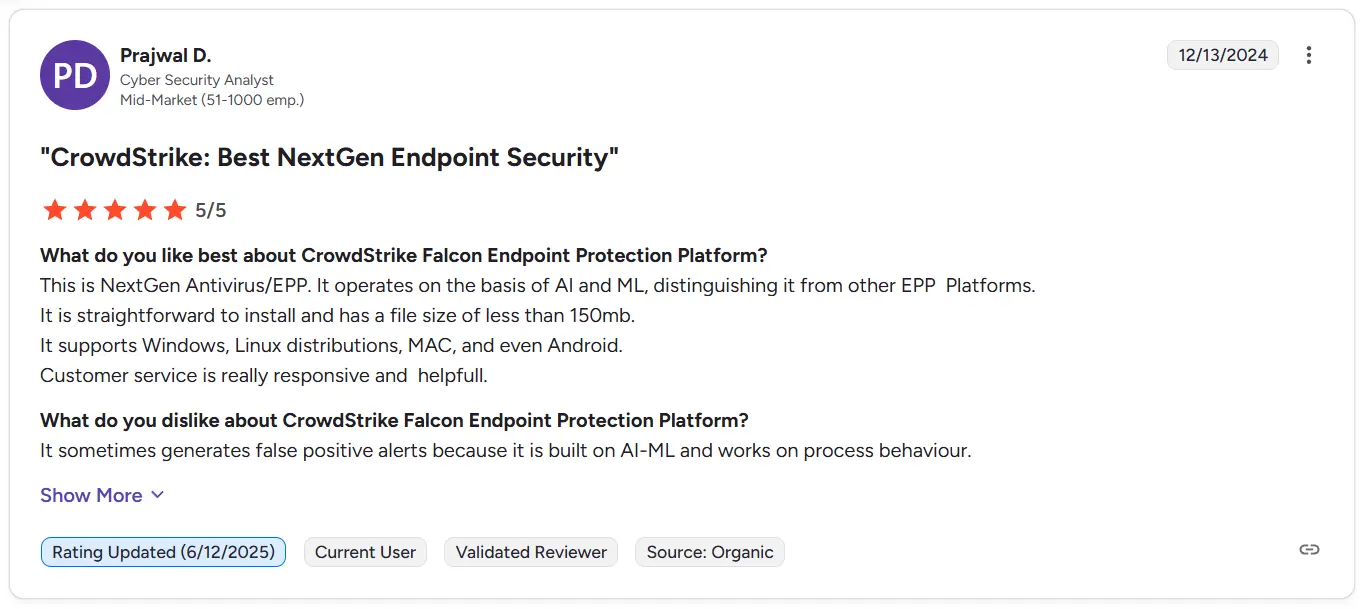
Source: G2
CrowdStrike Falcon holds a strong 4.7-star rating on G2, backed by numerous positive reviews that reflect high customer satisfaction and trust in the platform.
2. SentinelOne

SentinelOne provides an up-to-date security solution that integrates AI-driven automation with endpoint protection, detection, and response.
SentinelOne performs real-time, autonomous threat detection and remediation across endpoints and cloud environments, reducing the need for manual intervention, in contrast to typical SIEMs like Rapid7 InsightIDR, which concentrate on log ingestion and user behavior analytics.
If you are a team looking for a quicker, more efficient method of threat management then SentinelOne offers a solid substitute. Its platform is perfect for lean security teams and enterprises that value automation over log-heavy analysis since it minimizes alert fatigue and provides rich endpoint context.
SentinelOne key features
Real-time endpoint visibility
Seamless data loss prevention
Adaptive network security management
Advanced ransomware protection
Dynamic application control
Built-in integrations
SentinelOne pricing
Pricing starts from $179/endpoint.
SentinelOne ratings & reviews
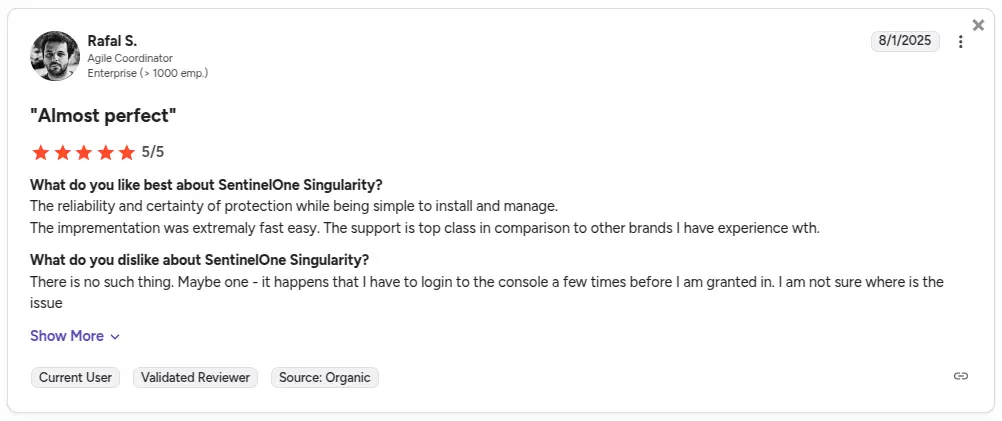
Source: G2
SentinelOne has a 4.7/5 rating on G2, backed by numerous positive reviews that praise its ease of use and threat detection capabilities.
Vulnerability management (Rapid7 InsightVM alternatives)
Rapid7 InsightVM that provides live visibility into assets, dynamic risk scoring and automated remediation workflows.
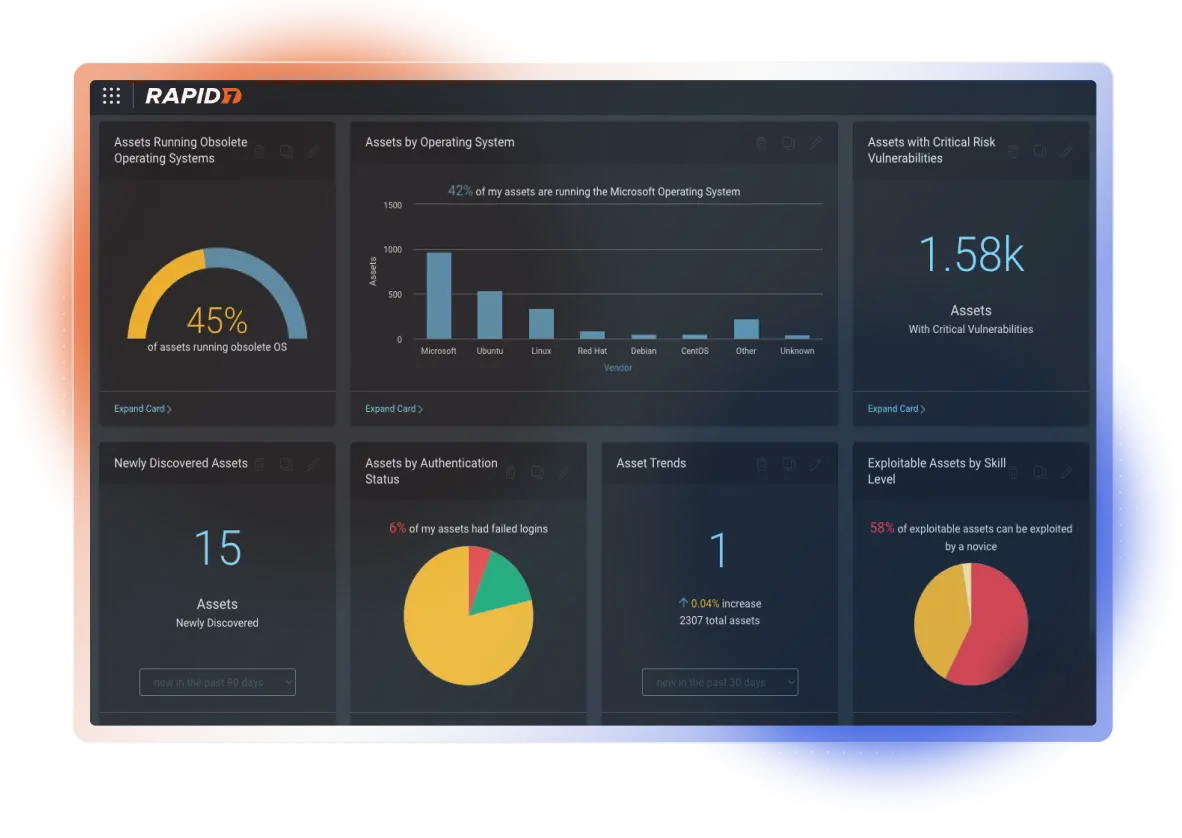
It supports hybrid environments, integrates with ticketing systems like Jira, and helps security teams prioritize vulnerabilities based on real-world risk impact. However, InsightVM comes with a few trade-offs. Users have noted performance slowdowns during large-scale scans. The higher pricing and complex interface is also a downside for smaller teams.
Let’s take a look at the Rapid7 InsightVM alternatives.
1. SecOps Solution
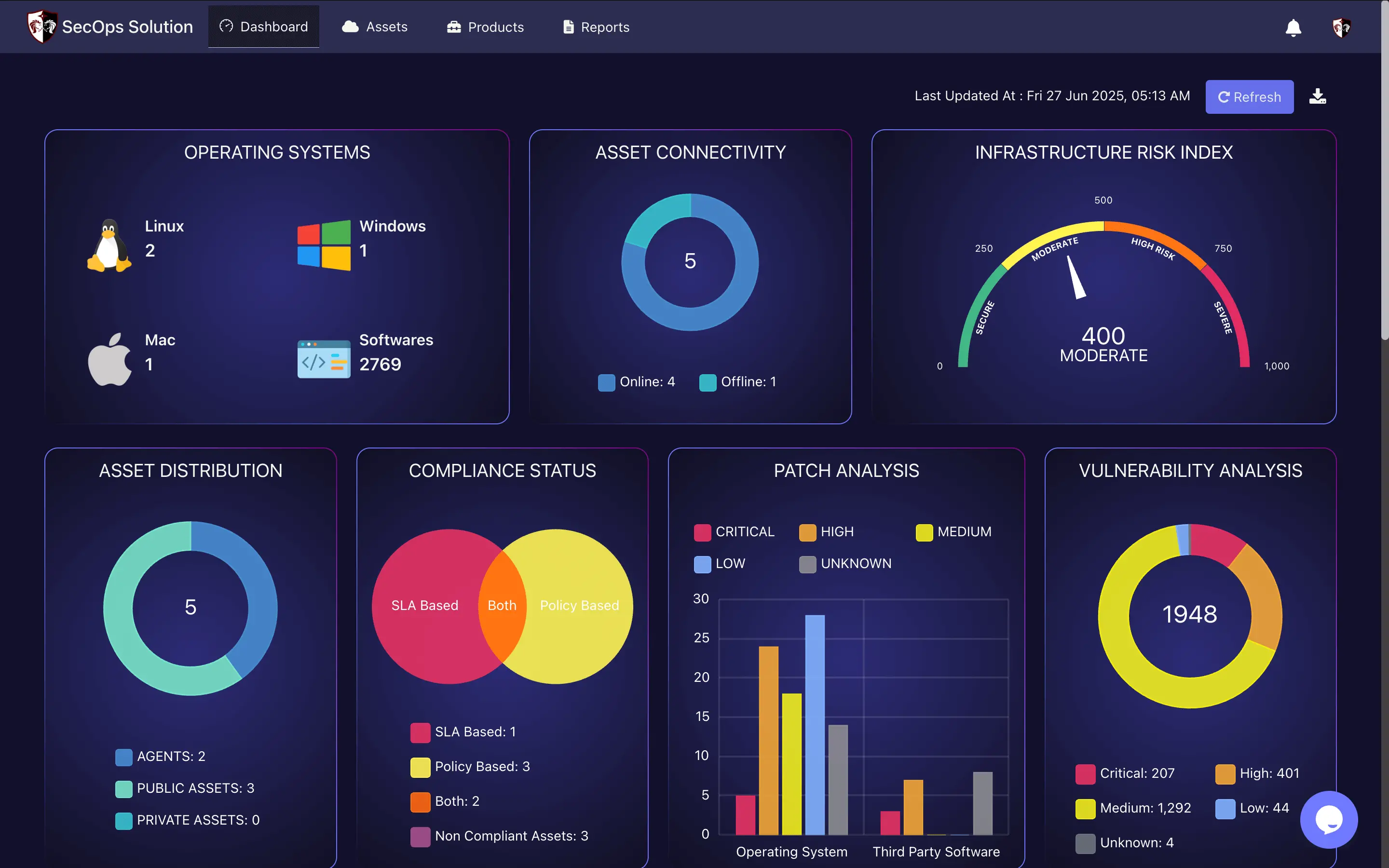
SecOps Solution is a next-generation, agentless vulnerability and patch management platform designed to simplify and accelerate remediation.
SecOps Solution offers a lightweight, simple-to-deploy experience in contrast to more conventional products like Rapid7 InsightVM, which frequently call for agents or intricate configurations.
It uses AI-powered scanning to identify critical vulnerabilities across infrastructure, applications, and cloud environments, making it especially useful for teams looking for speed, simplicity and accurate prioritization.
SecOps Solution key features
Agentless patch & vulnerability management
AI-driven risk prioritization for high-impact vulnerabilities
Proprietary scanners for app, infrastructure & cloud misconfigurations
Automated remediation with workflow integration
Detailed reporting with patch rollback support
SecOps Solution pricing
SecOps platform pricing is typically offered in three tiers Free, Professional and Managed Patching to suit different operational needs. However, specific pricing details are not publicly disclosed and usually require direct consultation with the vendor.
SecOps Solution ratings & reviews
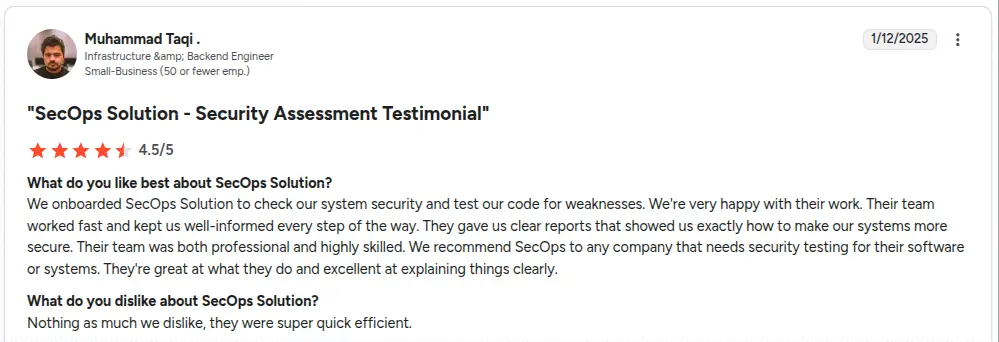
Source: G2
SecOps Solution has earned a strong reputation among users, with a 4.8-star rating on G2. Users consistently highlight its ease of use and agentless setup.
2. Tenable
Tenable’s focus on risk-based prioritization and integration options makes it a viable alternative to Rapid7 InsightVM, especially for teams looking for a platform that supports both traditional IT environments and evolving cloud infrastructures.
It offers both cloud-based (Tenable.io) and on-premises (Tenable.sc) solutions for vulnerability management, providing flexibility based on organizational needs. It uses continuous scanning and integrates with Nessus to help identify security weaknesses across assets and networks.
Its modular approach allows security teams to align the solution with their broader vulnerability management workflows.
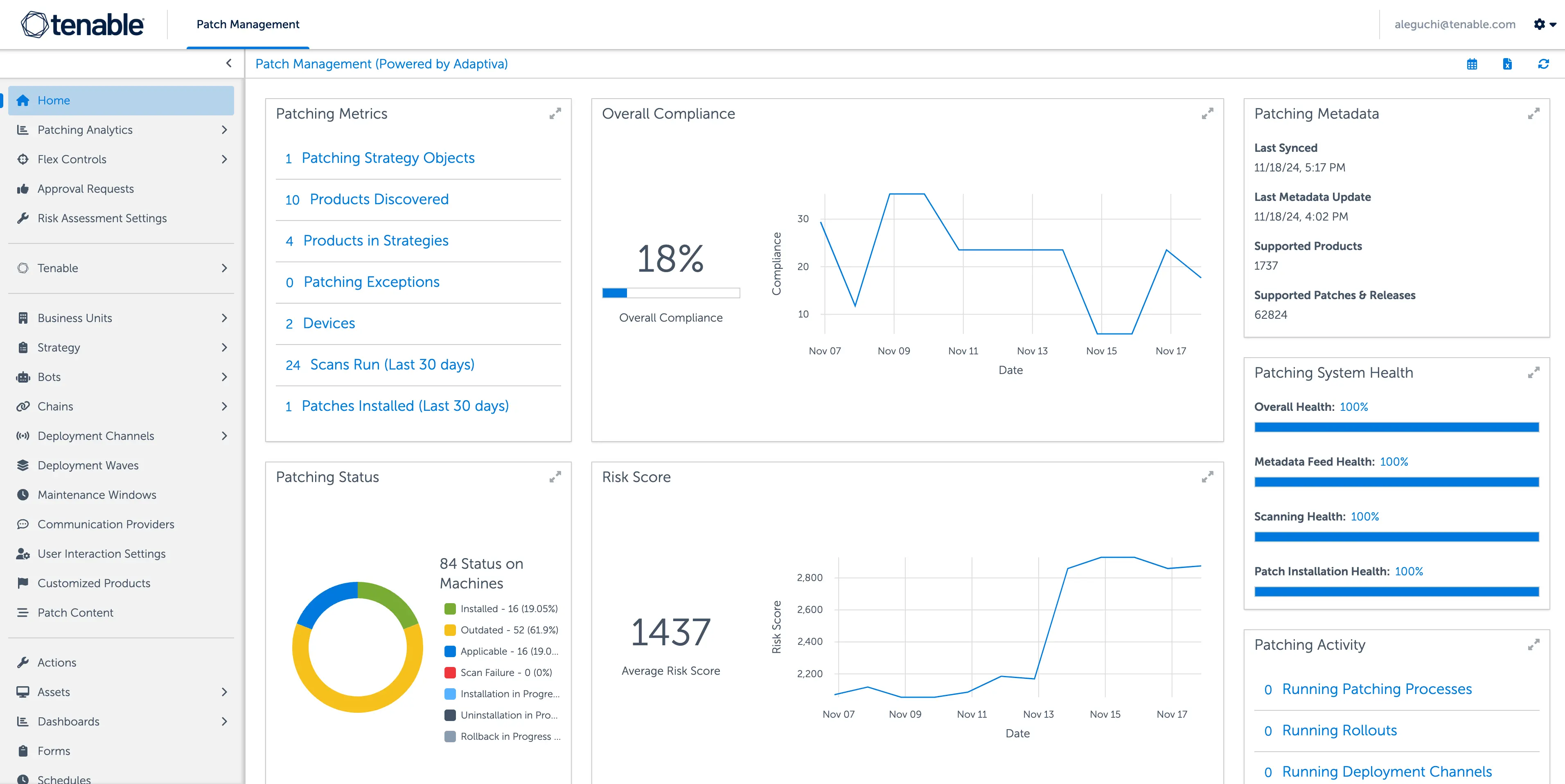
Tenable key features
Comprehensive vulnerability identification and assessment
Risk-based prioritization (VPR - Vulnerability Priority Rating)
Customizable dashboards and detailed remediation steps
Flexible deployment options
Tenable pricing
Pricing for Tenable starts at $5780/year for 100 assets, with asset bundles available in groups of 100, up to a maximum of five bundles per purchase.
Tenable ratings & reviews
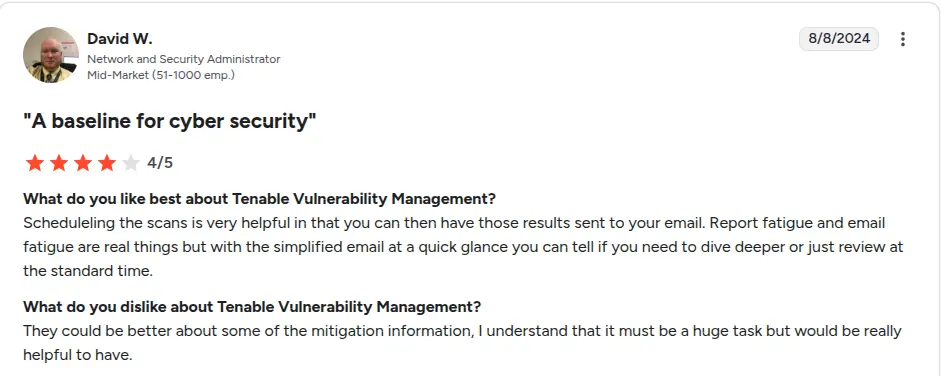
Source: G2
Tenable secures a 4.5 star rating on G2
Tenable isn’t without its limitations. Some reviewers point out that initial setup can be complex, particularly in large or hybrid environments. Others mention that scan times can become lengthy as asset counts scale, and a few cite slow support response times when troubleshooting issues.
Cloud-native application protection (Rapid7 InsightCloudSec alternatives)
Cloud-Native Application Protection Platforms (CNAPP) offer integrated security for cloud-native applications from development to runtime.
CNAPPs help organizations gain full visibility into their cloud environments and enforce security consistently.
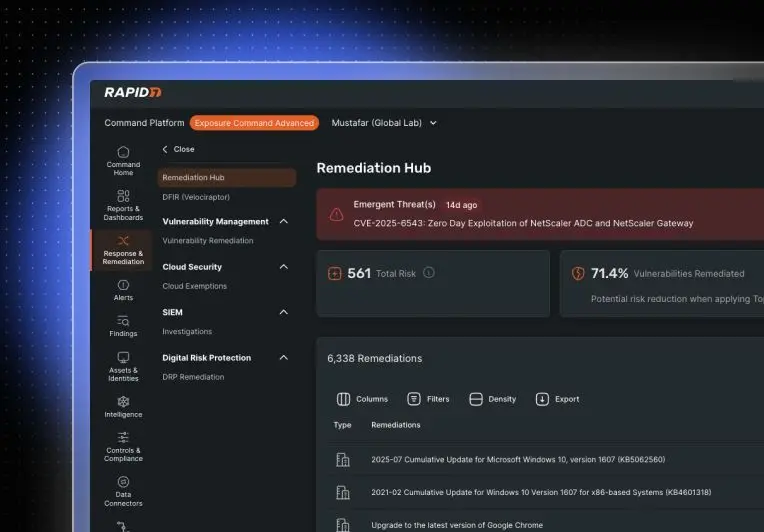
Rapid7 InsightCloudSec is Rapid7’s CNAPP offering that delivers continuous security and compliance for multi-cloud environments. It provides real-time monitoring, policy enforcement and visibility across AWS, Azure and GCP.
InsightCloudSec may not always be the most intuitive for new users, and some teams find the setup and tuning of policies complex at scale. Additionally, its licensing costs can be a limiting factor for smaller teams.
1. Wiz
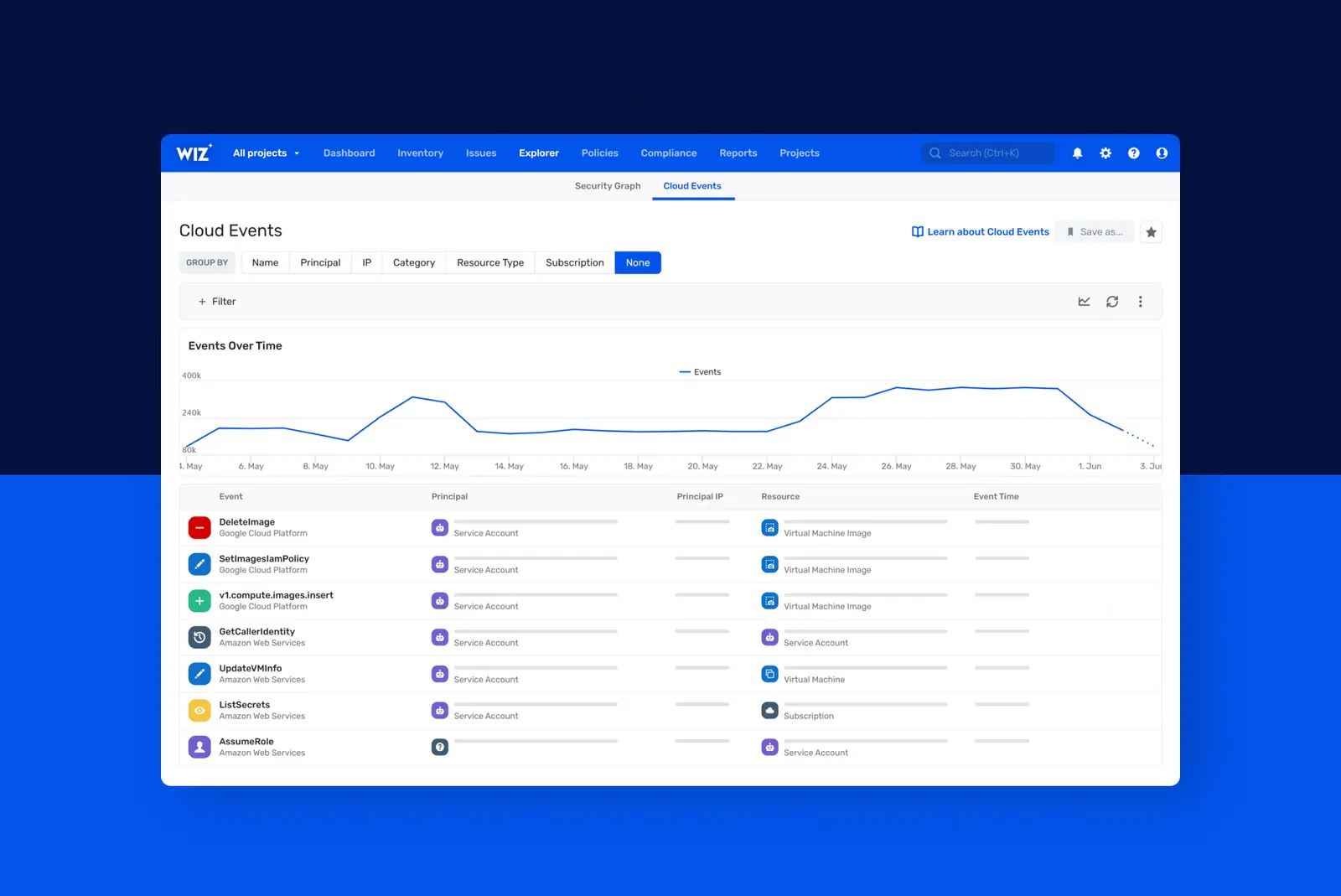
Wiz is one of the newer names gaining traction in the cloud security space, especially as teams look for simpler, more scalable alternatives to platforms like Rapid7 InsightCloudSec.
It takes an agentless approach to scanning, which means you can get visibility across your entire cloud environment without the hassle of installing anything on your workloads.
For many teams, this ease of use is the main draw. Wiz helps uncover vulnerabilities and misconfigurations all from a unified dashboard.
That said, while it’s great for fast, wide visibility, some organizations may find that it doesn’t go as deep on certain runtime or workload-specific protections compared to more mature platforms. But if you’re after a straightforward way to gain clarity over your cloud security posture, Wiz is definitely worth a look.
Wiz key features
Agentless CNAPP for cloud-wide security
Visualizes risk paths using graph-based mapping
Covers vulnerabilities, misconfigurations, and threat detection
Includes IaC and secrets scanning for DevSecOps integration
Wiz pricing
Wiz offers multiple pricing tiers based on workload coverage and feature depth.
The Wiz Essential plan is priced at $24000 for 100 cloud workloads, while the more feature-rich Wiz Advanced plan costs $38000 for the same workload capacity. Add-ons like Wiz Sensor and Wiz Code are available for extended capabilities, priced at $28,000 and $58,500 respectively for 100 units.
Wiz ratings & reviews

Source: G2
Wiz holds a solid 4.7 rating on G2, with users generally expressing positive experiences.
2. Orca Security
As an alternative to Rapid7, Orca focuses on simplifying cloud security operations while maintaining depth in detection capabilities. It offers unified risk prioritization, compliance reporting and attack path analysis, which can support faster response to cloud threats.
Both Orca Security and Wiz, as cloud-based security alternatives to Rapid7 InsightCloudSec, take an agentless approach. With Orca, you get deep visibility across cloud assets without disrupting performance, while Wiz emphasizes graph-based attack path analysis and proactive risk detection.
If you’re looking to modernize cloud security without the friction of traditional setups, these agentless platforms are worth considering.
Orca Security key features
Agentless cloud security
Comprehensive CNAPP capabilities
Vulnerability management and malware detection
Automated risk prioritization and alerting
Rapid deployment and easy integration with existing platforms
Orca Security pricing
Orca Security’s pricing is structured based on the size of concurrent workloads per month. The Small plan starts at $,000/month, followed by the Small-Medium plan at $1,000/month, Medium at $17000/month, and the Large plan at $30000/month.
Orca Security ratings & reviews
Orca Security is rated 4.6 on G2 and has also received several positive reviews. Here is one such review.

Source: G2
Key factors to consider when choosing a Rapid7 alternative
When evaluating alternatives to Rapid7, consider these key factors to ensure the chosen solution aligns with your organization’s specific security requirements and operational workflows.
Specific use case: Identify your primary security objective - application vulnerability testing (DAST), threat detection and response (SIEM), vulnerability management, or cloud-native application protection (CNAPP). Most specialized tools excel in one domain rather than attempting comprehensive coverage across all security categories.
Integration: Assess compatibility with your existing technology stack, including CI/CD pipelines, cloud infrastructure, identity providers, and current security tools. Native API support and pre-built connectors reduce implementation complexity and ongoing maintenance overhead.
Scalability: Evaluate the platform’s ability to handle increased data volume, additional applications, and growing infrastructure complexity as your organization expands. Consider both technical scaling capabilities and licensing model flexibility.
Ease of use: Examine interface design, configuration complexity, and learning curve requirements. Developer-friendly tools with intuitive dashboards and minimal setup requirements reduce time-to-value and improve security team adoption rates.
Reports and analytics: Review vulnerability reporting depth, customization options, and analytics capabilities. Compliance reporting features, executive-level dashboards, and actionable remediation guidance directly impact security program effectiveness and stakeholder communication.
Support: Investigate customer support responsiveness, documentation quality, and community resources. Technical support availability during critical incidents and comprehensive implementation guidance significantly impact operational success.
Budget: Compare pricing models including per-user, per-application, or consumption-based options. Factor in implementation costs, training requirements, and ongoing operational expenses to determine total cost of ownership.
Deployment options: Assess deployment flexibility across cloud, on-premises, or hybrid environments. Consider data residency requirements, compliance constraints, and infrastructure preferences that may limit deployment options.
Final thoughts
Selecting the optimal Rapid7 alternative requires aligning security tool capabilities with your organization’s specific threat landscape, development workflows, and operational constraints.
While Rapid7’s integrated platform approach works well for organizations seeking unified security management, specialized solutions often deliver superior performance in their respective domains.
Organizations prioritizing application security can achieve better vulnerability detection rates with specialized DAST tools, while those focused on threat detection may find purpose-built SIEM solutions more effective than broad platforms.
Your security program’s success ultimately depends on consistent implementation and team adoption rather than feature completeness. Choose tools that your developers will actually use, security teams can operate efficiently, and leadership can understand through clear reporting. The best alternative is the one that strengthens your security posture without creating operational friction that encourages workarounds.
Your security tooling decisions today should position your organization to adapt quickly to emerging attack vectors while maintaining the development velocity that drives business growth.
![Top 20 cybersecurity consulting firms [2025] Top 20 cybersecurity consulting firms [2025]](https://beaglesecurity.com/blog/images/blog-banner-two-840.webp)



![Top 10 penetration testing companies [2025] Top 10 penetration testing companies [2025]](https://beaglesecurity.com/blog/images/blog-banner-three-840.webp)
